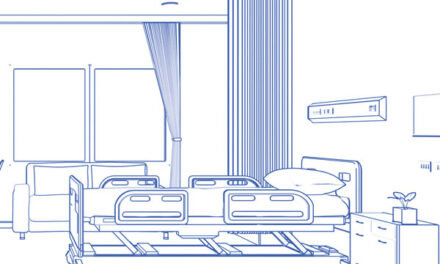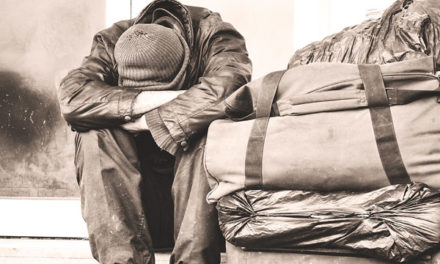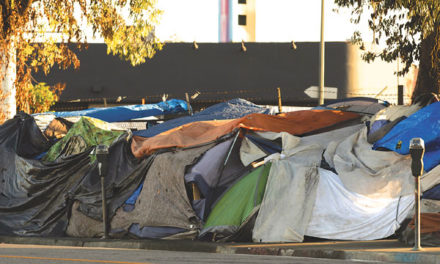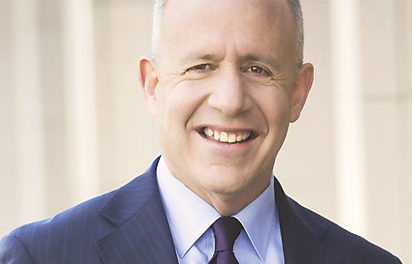Off The Streets
How motels become homes for homeless
By Matt Levin
August 2020
Salvador Bradford takes pride in keeping his studio apartment tidy. His converted hotel room has around 250 square feet for a bathroom, stove and mini-fridge.
There is space for the trappings of a home: a shelf of Star Wars and Star Trek DVDs, and a small shrine to Jesus Christ, to whom Bradford credits his past five years of sobriety.
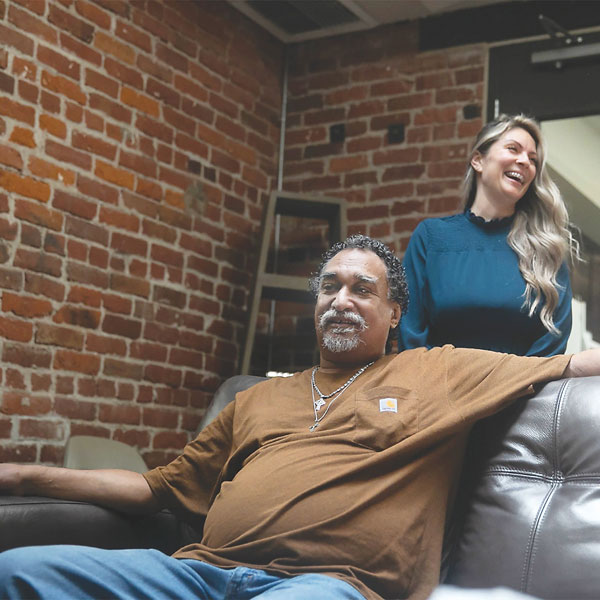
He lives at the former Hotel Berry in Downtown and says his twin mattress sure beats the past two years sleeping on the streets of San Francisco and Sacramento.
“It was horrible. I was dying, slowly but surely,” Bradford, 64, says. “People (were) having sex in the alleyways, people (were) shooting up crystal meth.”
Gov. Gavin Newsom’s plan to make a permanent dent in California’s homelessness crisis—more than 150,000 unhoused individuals, including more than 100,000 sleeping outside—would create hundreds of properties like the Hotel Berry, an 80-year-old motel transformed into 104 supportive housing units for the formerly homeless.
Newsom wants to spend $600 million in federal emergency dollars to expand Project Roomkey, a joint state and federal program that has leased more than 15,700 hotel rooms for homeless Californians deemed especially susceptible to the coronavirus. Roughly 9,600 rooms were occupied in June.
Phase Two of the project is buying as many hotels or motels as possible for permanent homeless housing by the end of the year. That’s when the $600 million must be spent or returned to the feds.
California has never tried buying so many properties to house its homeless population in such a short period of time. It won’t be easy. Here’s how motels are typically converted to more permanent homeless housing:
STEP 1: BUY THE HOTEL
Cost: $100,000–$175,000 per room, but varies across the state. Time: two to three months of negotiations, not including escrow.
Land isn’t cheap in California, especially in coastal regions where the homeless are disproportionately located.
Data provided by the California Hotel & Lodging Association, a hospitality industry advocacy group, indicate hotels that could be targeted by the state—budget chains like Motel 6 with 150 units or less—fetch more than $100,000 per unit in Los Angeles County. A 40-room Travel Plaza in Compton sold for $4.5 million last year. Costs are steeper in the Bay Area.
Low-income housing developers caution that prices vary from region to region and according to the quality of motel. Extended-stay hotels that come pre-furnished with kitchenettes will be more expensive than deteriorating single-room-occupancy motels, which may be cheaper upfront but require more rehab or outright demolition to turn into supportive housing.
Newsom is tentatively budgeting $100,000 to $150,000 per unit. The governor hopes a glut of hotel owners, pummeled by the pandemic-induced collapse of tourism, will gladly exit the industry. That, combined with a recession-induced dip in commercial real estate prices, could mean a rare bargain.
STEP 2: GET APPROVAL FROM THE CITY
Cost: Hard to quantify, but the quicker the cheaper. Time: one to two years, but much faster if Newsom gets his way.
Why does it take so long? Because nobody wants to pay $10 million for a motel the city won’t let you turn into housing.
Homeless housing developers must shepherd projects through a series of regulatory steps that need the sign-off of city planning departments and sometimes city councils. One uniquely essential step for most motel conversions: getting the city to change the zoning on a motel from “commercial” to “residential” use.
Newsom can’t afford an 18-month escrow while local governments review plans. It has six months to buy $600 million in real estate before the money disappears.
To speed up the regulatory process, Newsom proposes to take away much of the power cities have to shape the look of a converted motel. Several cities have lodged or threatened legal action.
STEP 3: CONSTRUCTION
Cost: Less than $10 million, but will vary according to type of homeless housing. Timing: six to 12 months, depending on the type.
Research suggests permanent supportive housing is the gold standard for preventing the chronically homeless from returning to the streets. But it requires a good deal of construction work.
Individual rooms must be retrofitted to accommodate stoves, sinks, mini-refrigerators and a microwave; electrical and plumbing systems for older buildings often must be updated to current code; sound-attenuating insulation might be required to prevent neighbors from disturbing one another. Per state law, nearly all housing projects using public subsidies must pay union-level wages.
The “supportive” element requires a good chunk of real estate to accommodate multiple offices for case managers, and rooms for group counseling and other activities.
STEP 4: RUNNING THE BUILDING
Cost: $10,000 per unit per year (but varies). Timing: ongoing.
Bruni Rocha is part of the support staff that keeps the Hotel Berry running: a building manager responsible for upkeep and repairs; a night clerk to provide security; a supportive services staffer to run cooking classes and other life skills programs; janitorial staff to keep common spaces clean and functioning; and her, the supportive services manager.
That doesn’t include the case manager from a separate nonprofit that makes sure about a dozen residents keep up with their mental health appointments, or the social worker from Veterans Affairs who checks up on the vets in the Berry.
“You can’t just put somebody that was formerly homeless in a building and expect them to have all the life skills that they need,” Rocha says. “They’re used to being on the streets.”
The cost of operating permanent supportive housing, or even less intensive supportive housing, adds up quickly and does not go away.
Matt Levin is data and housing reporter for CalMatters, a nonpartisan, nonprofit journalism venture that made this story available to Inside Sacramento. He can be reached at matt@calmatters.org.



